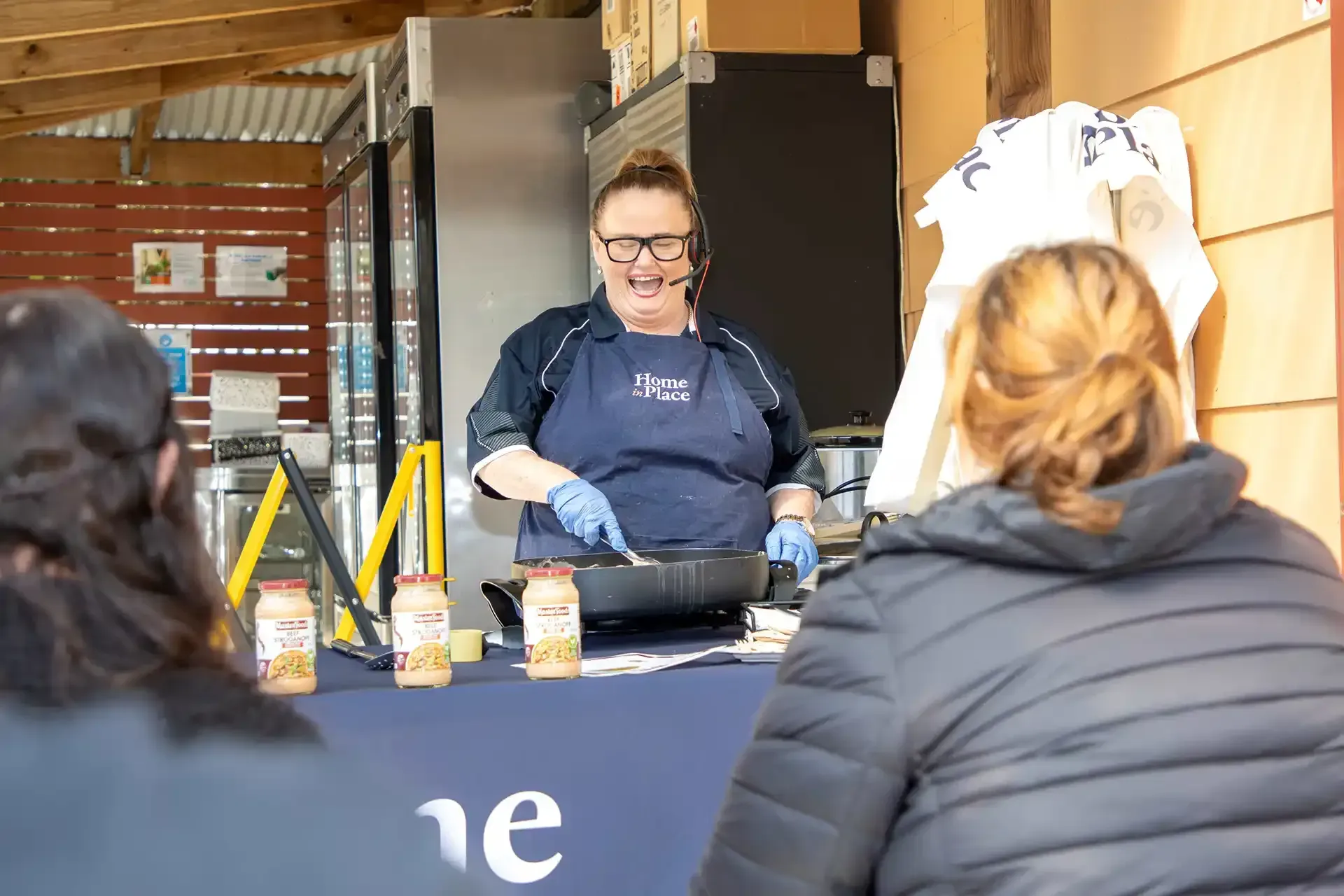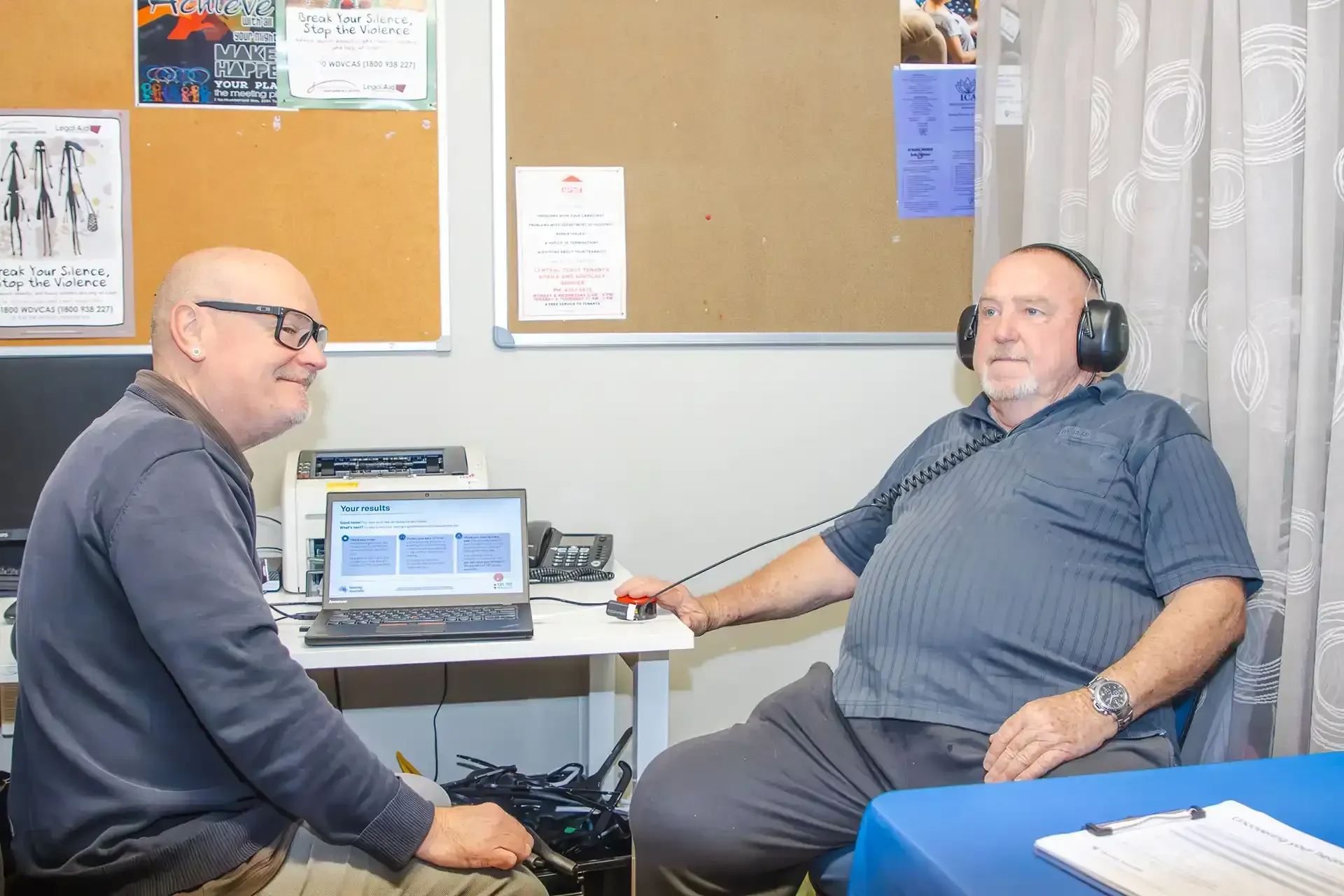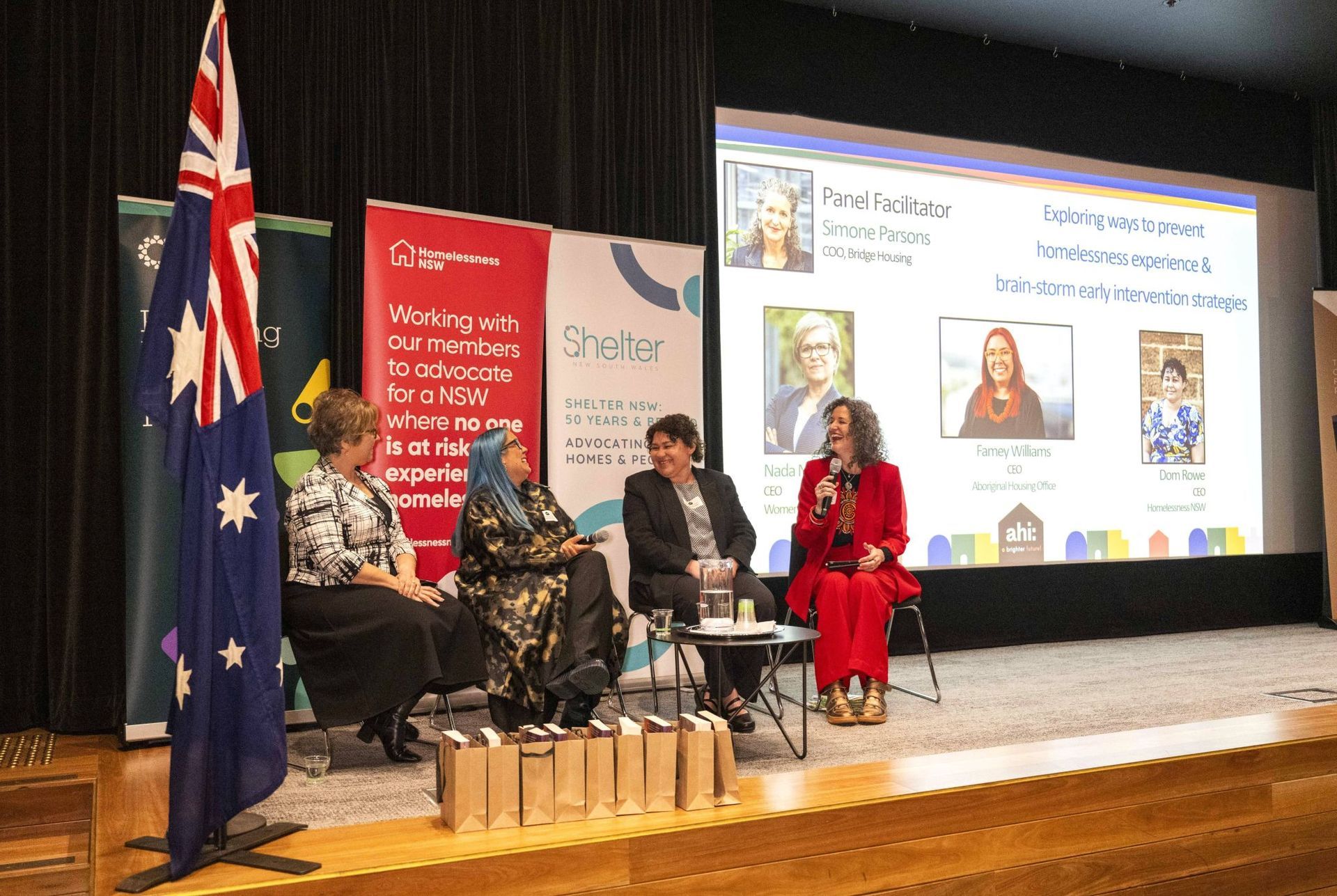Do we really understand the support needs of social housing tenants? What we may assume, even from our sector experience, could be different to the current realities. Megan Freund from the University of Newcastle teamed with Shalik Ram Dhital and David Adamson from Home in Place to uncover some truths.
Anyone who works in social housing will be very aware of the many challenges, often complex, that can be experienced by residents of our communities. This is an inevitable consequence of rationing a scarce resource, which leads to only those with the highest needs receiving our services.
In 2022-23, over 83% of allocations to public housing in Australia were to people designated as having ‘greatest’ needs. Of these, 54% were defined as homeless and a further 36% were at risk of homelessness (AIHW, 2024a). Behind these statistics are many life stories of trauma, physical and mental health challenges, disability and social isolation (Buhrich et al, 2000).
Housing providers are not funded to meet these needs but often provide support for residents to help them maintain the tenancy. Consequently, a better understanding of support needs, and the role of the social housing provider, can equip us collectively to be more effective and efficient in the use of our scarce resources.
Social housing populations are diverse in nature and can be viewed from a 'deficit' perspective (only identifying problematic behaviours), or from an ‘asset’ or ‘strengths’ based perspective (where residents engage in positive and supportive behavioural characteristics). In this article, we take an assets-based perspective and assume that social housing residents can and will engage with health and wellbeing initiatives; however, we do so while recognising the very real barriers and poor health outcomes that get in the way.
Problematic behaviours can include neighbourhood noise and anti-social behaviours causing stress and irritation, intentional activities that harm neighbours, the use of offensive language and, in more extreme cases, causing physical, mental and social harms such as drug production and supply, and violence against other tenants (AIHW, 2024b).
Supportive behaviours include mutual support between neighbours, following tenancy rules, promoting good neighbourhood relationships, showing care and support, keeping a property clean and well-maintained, and engaging with support mechanisms such as health education and specific programs to improve wellbeing.
With this complex situation, the needs of social housing residents and support for better living and wellbeing are yet to be fully studied and comprehensively understood. Here, we outline our research exploring the support needs of social housing residents and provide recommendations to develop a housing service that promotes health and wellbeing for this specific population, which often misses wider support programs targeted at the general population in Australia.
THE SURVEY CONTEXT
Home in Place has a long-term engagement with staff at the Health Behaviour Research Collaborative, School of Medicine and Public Health, University of Newcastle, NSW, Australia. This began with a survey-based pilot in 2019 to assess the support needs of social housing residents, (Freund et al, 2022, 2023a), and then a second study in 2023 assessing the health literacy of social housing tenants (Freund et al, 2023b).
Firstly, let's look at a few statistics to set the context of social housing in Australia.
"In 2022-2023, approximately 824,000 (4.1%) of the population lived in social housing."
In 2022-2023, approximately 824,000 (4.1%) of the population lived in social housing, distributed between four components of the social housing sector: 67% in public housing, 23% in community housing, 5.9% in state-owned and managed indigenous housing (SOMIH) and 3.85% in indigenous community housing. Some 55% of residents are female, over a third are over 55 years old, and another third are below 25 years old (AIHW, 2024a).
Indigenous Australians and other disadvantaged groups are over-represented among social housing occupants. Approximately 18% of Aboriginal and Torres Strait Islander households reside in social housing, although only making up 3.8% of the total Australian population (AIHW, 2023). The sample in our study were approximately representative of the general social housing population but with a higher proportion of respondents over 55 years of age and female. Participation was voluntary but was incentivised with a $20 gift card.

SUPPORTS NEEDS OF SOCIAL HOUSING TENANTS
The survey asked residents about their support needs according to five categories (domains) of everyday activities:
- Transport, employment and financial stress
- Housing and safety
- Health and wellbeing
- Access to services
- Life control
In total, 38 potential support needs were identified, and the questions were designed to explore whether help with an issue was needed, and to what degree.
Response options for each item were: ‘I had enough help’, ‘I could’ve used a little more help, ‘I could’ve used a lot more help’, or ‘I didn’t need help’.
SURVEY FINDINGS
The highest reported ‘need for help’ referred to financial need, specifically ‘paying for an unexpected bill’. Clearly, this is a consequence of social housing allocation to the lowest income decile of the population and the expected challenges with financial issues.
Of the remaining top five support needs, mental-health-related issues dominated.
Table 1. Top 5 identified support needs
| Need | Domain | Could have used help (%) |
|---|---|---|
| Paying unexpected bills (e.g. broken fridge) | Transport, employment and financial stress | 42 |
| Feelings of sadness or anxiety | Health and wellbeing | 39 |
| Feelings of anger or frustration | Health and wellbeing | 34 |
| Memory or concentration problems | Health and wellbeing | 33 |
| Worrying about the future | Health and wellbeing | 32 |
Over one third of residents expressed a need for help with antisocial behaviour, and a quarter of residents identified help needed with feeling safe in their complex or neighbourhood.
In contrast, the number of respondents citing help needed with some of the stereotypical behaviours often identified with social housing residents, such as addiction and domestic violence, were very low. Some explanation of this low number can be accounted for by social desirability bias and reluctance to report issues that may lead to a tenancy breach, despite assurances that only university staff had access to the data.
Table 2. Lowest 5 identified support needs
| Need | Domain | Could have used help (%) |
|---|---|---|
| Alcohol problems | Health and wellbeing | 6 |
| Gambling problems | Health and wellbeing | 5 |
| Drug problems | Health and wellbeing | 4 |
| Overcrowding at home | Housing and services | 4 |
| Violence in your household | Health and wellbeing | 2 |
Unsurprisingly, the need for help was not distributed evenly throughout the sample, and there was clustering of support needs with individuals often identifying support was needed with multiple issues. Respondents on average identified seven areas of their lives requiring support.
Of the demographic characteristics identified by the survey, only Aboriginal and Torres Strait Islander status had any significant impact on the extent of help needed – the 21% of respondents who identified as Aboriginal and Torres Strait Islander people reported a mean of 11.5 support needs.
"The predominance of health concerns in the sample prompted the university team to consider the health literacy of social housing tenants in Australia generally."
The predominance of health concerns in the sample prompted the university team to consider the health literacy of social housing tenants in Australia generally. Health literacy refers to’ an individual’s ability to seek, locate, comprehend and appraise health information, and apply the knowledge gained to address or solve a health problem (Freund et al, 2023b). Low health literacy is a factor influencing health itself through factors including access to services.
Using data from the 2017–2018 Australian National Health survey, the review concluded that social housing tenants did have lower levels of health literacy compared to other housing tenures, but the difference was relatively minor and not to the extent more generally indicated by poor health outcomes for residents of social housing.
CONCLUSIONS
The identification of a complex and interrelated set of support needs raises a critical question, especially for community housing providers (CHPs), as to the extent of support that can be provided by a service not generally funded to deliver any level of case management and support.
"The increasing vulnerability and complex support needs of a changing tenant population will create a pressing need to support tenants to maintain their tenancies."
Although the potential for outcomes-based contracting seems to have faded currently, the increasing vulnerability and complex support needs of a changing tenant population will create a pressing need to support tenants to maintain their tenancies. Ensuring they receive appropriate support may become a condition of delivering an effective and financially viable housing service.
The examples of the Tailored Coordinated Support model of the NSW Social and Affordable Housing Fund (SAHF), and the funded support partnerships between CHPs and support agencies in the NSW Together Home program, have demonstrated the capacity of the sector to meet this rising level of need, providing there is a targeted funding stream.

CHPs deploying Commonwealth Rental Assistance already achieve considerable contributions to tenant wellbeing, but additional funding could begin to improve the widening health and wellbeing gap between social housing residents and the general population.
RECOMMENDATIONS
Recognising this potential role points to some areas where social housing agencies could intervene.
"Given the highest need for support was financial, assisting tenants with financial pressure points can have advantages for tenants and providers."
Firstly, it is important to create support programs that help social housing tenants with both their housing and non-housing needs. Given the highest need for support was financial, assisting tenants with financial pressure points can have advantages for tenants and providers. Brokerage referrals, assisting Energy Accounts Payment Assistance (EAPA) applications (NSW), or equivalents in other jurisdictions, offering debt counselling and debt management plans can all assist tenants to maintain a tenancy through a financial challenge.
Secondly, improving access to quality healthcare services is crucial. Tenants should have easy access to healthcare services, including mental health support and places for physical exercise. By supporting healthcare accessibility, housing providers can significantly enhance the health outcomes and quality of life for tenants, addressing the disproportionate health challenges they often face compared to the general population.
Best achieved through partnership with expert agencies, housing providers can host health education sessions on smoking cessation, substance and alcohol misuse, diet improvement, weight loss and WASH (water, sanitation and hygiene) programs. All these are relatively cost-effective to deliver and will often be funded by external agencies, especially where a CHP facilitates access to the social housing population, which is often defined as ‘hard to reach’ by other agencies. The unique relationship between tenants and housing providers provides access to marginalised population other agencies frequently fail to reach.
Thirdly, fostering improved social cohesion and reduced anti-social behaviour can reduce stress and improve the mental health challenges identified in the survey. Community development activities, community gardens and providing volunteering opportunities can develop community social capital and an improved sense of wellbeing. Life-skills training to empower social housing tenants with essential skills, such as budgeting and household safety, can create an enabling environment where residents are able to live more independently and make informed choices regarding lifestyle and consumption patterns.
These recommendations aim to create a supportive environment that enhances social housing residents’ overall health, wellbeing and quality of life.
Authors: Shalik Ram Dhital (Post-Doctoral Research Assistant), David Adamson (Manager Special Projects, Home in Place) and Megan Freund (School of Medicine and Public Health, College of Health, Medicine and Wellbeing, University of Newcastle, NSW)
References:
AIHW (2023). Housing circumstances of First Nations people. Australian Institute of Health and Welfare. Available from https://www.aihw.gov.au/reports/australias-welfare/indigenous-housing. Accessed 25th July 2024.
AIHW (2024a) Housing Assistance in Australia 2024. Australian Institute of Health and Welfare. Available from https://www.aihw.gov.au/reports/housing-assistance/housing-assistance-in-australia/contents/entries-exits-and-transfers#HH. Accessed 12th July 2024.
AIHW (2024b). Alcohol, Tobacco, and other drugs in Australia. Australian Institute of Health and Welfare. https://www.aihw.gov.au/reports/alcohol/alcohol-tobacco-other-drugs-australia/contents/drug-types/alcohol#keyfindings. Accessed 15th July 2024.
Australian Bureau of Statistics. National Health Survey: Health literacy [Internet]. Canberra: ABS; 2018 [cited 2024 July 25]. Available from: https://www.abs.gov.au/statistics/health/health-conditions-and-risks/national-health-survey-health-literacy/latest-release.
Australian Bureau of Statistics. Housing Statistics for Aboriginal and Torres Strait Islander Peoples. Available from https://www.abs.gov.au/statistics/people/aboriginal-and-torres-strait-islander-peoples/housing-statistics-aboriginal-and-torres-strait-islander-peoples/latest-release. Accessed 25th July 2024.
Buhrich N, Hodder T, Teesson M. ‘Lifetime prevalence of trauma among homeless people in Sydney.’ Australian & New Zealand Journal of Psychiatry. 2000 Dec;34(6):963-6.
Freund M, Clapham M, Ooi JY, Adamson D, Boyes A, Sanson-Fisher R. (2023a)‘The health and wellbeing of Australian social housing tenants compared to people living in other types of housing.’ BMC public health. 2023 Nov 24;23(1):2334.
Freund, M., Noble, N., Boyes, A., Clapham, M., Adamson, D., & Sanson-Fisher, R. (2023b). ‘How Does the Health Literacy of Adults Residing in Social Housing Compare with That of Those Living in Other Housing Tenures in Australia? A Secondary Analysis of the Australian National Health Survey 2017–2018 Dataset.’ International journal of environmental research and public health, 20(18), 6753.
Freund, M., Sanson-Fisher, R., Adamson, D., Norton, G., Hobden, B., & Clapham, M. (2022). ‘The wellbeing needs of social housing tenants in Australia: an exploratory study.’ BMC public health, 22(1), 582.
Parsell, C., Moutou, O., Lucio, E. and Parkinson, S. (2015)
Supportive housing to address homelessness, AHURI Final Report No.240. Melbourne: Australian Housing and Urban Research Institute. Available from
https://www.ahuri.edu.au/sites/default/files/migration/documents/AHURI_Final_Report_No240_Supportive-housing-to-address-homelessness.pdf. Accessed 25th July 2024.
Share This Article
Other articles you may like








